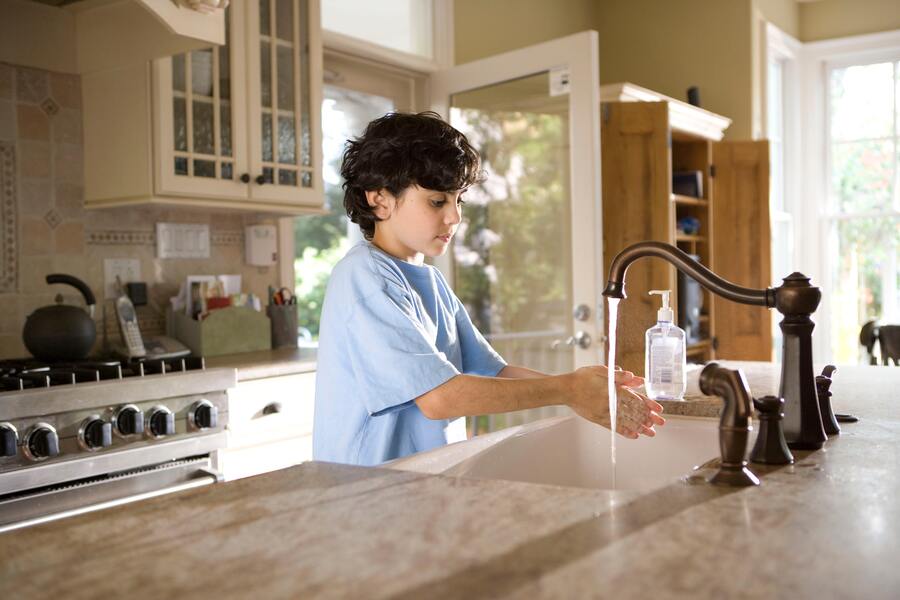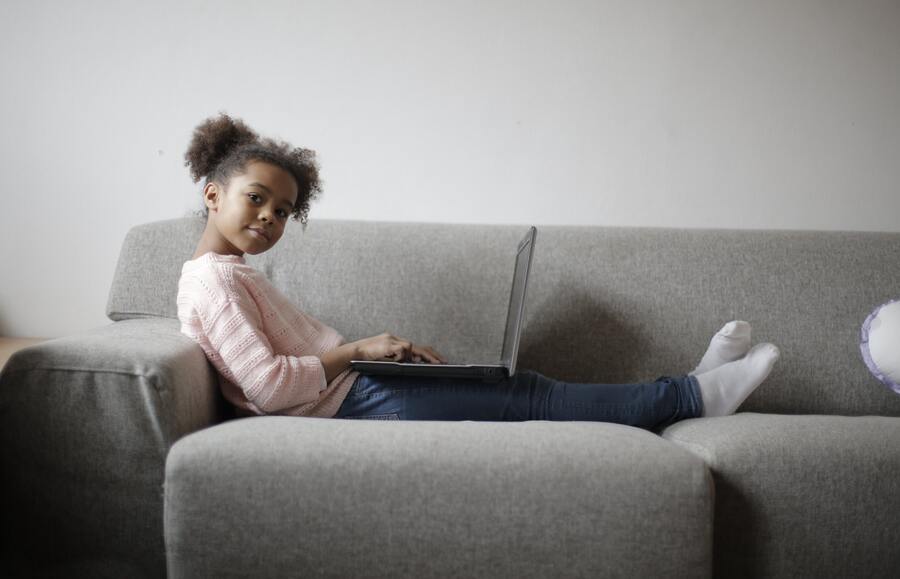It’s that time – you’re considering leaving your child alone at home for the first time and worrying about all the things that could go wrong. You’re wondering if it’s too soon and maybe you aren’t sure how to decide. Don’t worry – first of all, you’re not alone. Leaving your kiddo at home alone is scary for all parents, but we’re here to guide you through the process so you can feel more confident.
Children crave independence, and leaving them at home alone is a great way to teach them self-reliance and build confidence. With careful planning and education, you’ll be ready to decide when the time is right for your family.
Factors to consider
There is no “one size fits all” solution to when it’s the right time to leave your child at home alone, but there are some safety rules that do need to be followed. Each state has home-alone laws that govern the age at which a child can be left alone, for how long, and under what circumstances. Children under seven should never be left alone at home for any reason. Most state legislation will reflect this, but in any case, young children aren’t self-sufficient enough to be safe alone. Make sure you’re familiar with the laws in your state and any states you may visit with your children.
One of the most common reasons parents consider leaving their children home alone is overlapping work and after-school schedules. As your children mature, they’ll likely crave trust and independence; as a bonus, you’ll have less childcare to pay for.
If your little ones are eight to 10 years old, depending on their development and maturity level, it might be the right time to begin leaving them at home for no more than an hour at a time and always during daylight hours.
Eleven to 12-year-old children may be able to be left unsupervised for longer times, but you’ll have to base that call on their individual maturity and self-reliance.
Teenagers can likely be responsible for themselves during after-school and evening hours and even overnight as they age. Making sure your teen has food that’s ready to heat up or easy to prepare will help ease worries about cooking. Setting clear rules about having friends over and what time they should leave is important to build trust and set boundaries.
Developing safety skills
The biggest consideration when leaving your child at home is their safety; many parents suffer from anxiety while away. Developing a home safety and emergency plan with your children is a great way to get them involved with the process and make them more likely to remember and follow through. This has the side benefit of easing your worries, too.
Using home safety skills as an incentive to leave your children home alone is a great way to encourage them to learn and retain safety practices. Creating a safety plan with a checklist, including locking all the doors, closing blinds and curtains, turning on outside lights, etc., will help establish safe routines when you’re away from home. Once you have a plan in place, set up a trial period. This will help you to establish trust with your kiddo and gauge whether they’re ready for this new responsibility.
Another option is to allow older children to watch over little ones at home. This can be a wonderful way to encourage sibling bonding and show your confidence in older children. If you think this would be a good option, have your older child take a babysitting course to learn fundamental skills.
Creating a safe space
Before you leave your child alone at home for the first time, take stock of what the most potentially hazardous areas of your home are. Once you know what that looks like, take steps to reduce those risks by implementing rules and guidelines and potentially locking dangerous rooms or making some areas off-limits when you’re not home.
Avoiding accidents when you’re not home is important for your peace of mind and your child’s confidence. Set up rules around cooking and using the kitchen, which can be a common place for accidents, and make sure that the food and snacks they’re likely to want are on low shelves.
Awareness around areas like the garage and utility rooms is important, so take the time to walk your kiddo through the potential dangers and explain why they should stay out of these spaces. Doing this also reduces natural curiosity, making it less likely for them to explore these places when you leave.
Child safety technologies
Gone are the days when parents leaving their children at home just had to educate, prepare, and hope for the best. Technological advances have a huge impact on child safety when you’re not at home, and taking advantage of these innovations can go a long way toward easing any anxieties you might have.
Smart home security systems, video doorbells, and wearable GPS devices are some of the best ways to reassure nervous parents that their children are safe at home. Newer smart home systems have camera options so that you can check in on your independent kiddo when they’re home alone. Not only can you see them, but these systems provide easy access to emergency services if something goes awry.
Aside from physical accidents, one of the most dangerous places for your children to be while home alone is online. We’ve all heard the terrible stories of predators targeting children online, but the good news is that with some easy-to-install computer monitoring software, you can restrict online activity and monitor it to make sure thsafat your kids are safe inside your home as well as online.

Time to leave
Making your child’s time at home alone a successful and confidence-building experience is all about clear communication and baby steps.
This is a big step and time of transition, so it’s key to ensure that your child is comfortable with this new responsibility, has clear rules and expectations, and knows what to do in cases of emergency or unexpected situations. Written checklists of tasks, like regular check-ins and rules in highly visible places, will help remind your little one what they need to do while you’re away and bring accountability to their role in building your trust.
Another important part of this process is making sure that your little one knows what to do if you can’t be home on time, or something unexpected happens. Neighbors that your child knows and is comfortable with can be a great resource for a backup plan, creating a safety net in case anything happens to keep you away from home for longer than expected.
Finding child care alternatives
If you’re not quite ready to leave your child alone at home but still need solid options for after-school care, there are some great resources that you can take advantage of.
Babysitting exchanges or co-operatives are a great way to save money and give your child time to spend with friends, too. If you can join or put together a group of five or more families that can each take one school day a week, then you have a great system that doesn’t put too much pressure or reliance on anyone.
After-school camps and activities are other great options that are offered in many communities. This can be the perfect way to give your kiddo time to learn a new skill or practice something that they love, all while creating a safe place for them to be until you’re finished work.
Hiring a babysitter
Hiring a babysitter or au pair to look after your child is also a perfect way to give you some peace of mind and have less stress about finding childcare. Make sure you have a backup babysitter or two. Nothing is worse than scrambling at the last minute because your regular sitter comes down with a cold.
Taking time to plan for and gauge whether your little ones are ready for the responsibility of being left at home alone is important and not something that should be rushed or done at the last minute. Setting up a plan and gradually increasing your time away from home will provide a solid foundation for your family to feel confident and safe in this new arrangement.




